Lake Skadar
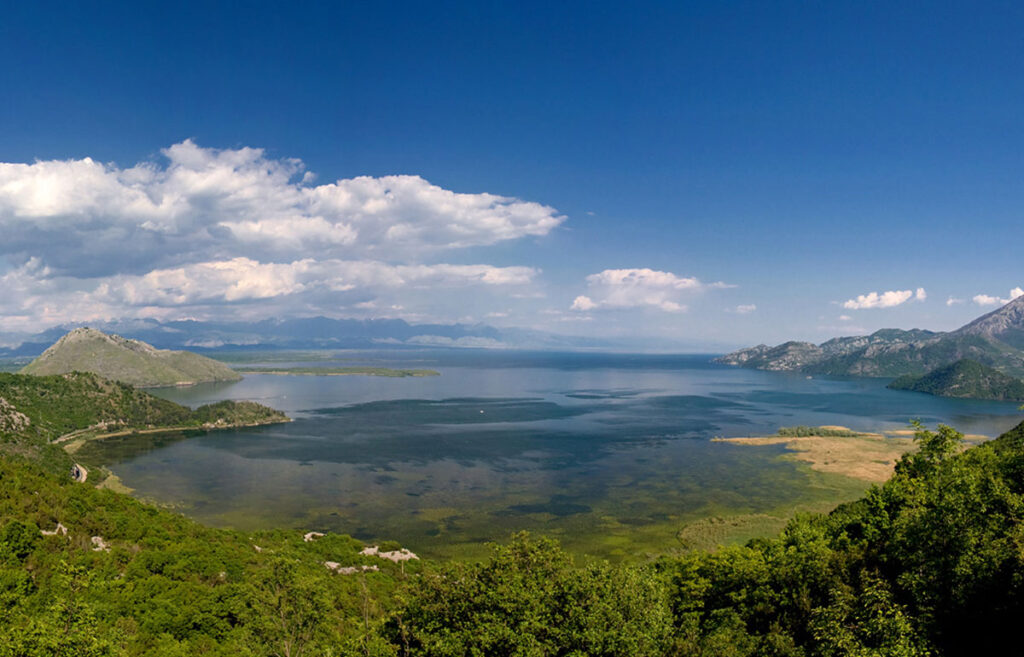
Lake Skadar is one of the most important tourist resources of Montenegro and Podgorica. It is a unique nature reservation with a very rich diversity of flora and fauna and the settlement of rare an endangered species of birds like curly pelican. There, you may enjoy boat and ship cruises, swimming on the beach, visiting the island`s churches and monasteries, bird watching and fishing. On the Lake, there is a unique island village called Vranjina, which is known as Montenegrin Venice. The Visitors’ Centar is also located there with the relief collection of all Montenegro National parks, as well as the exhibition of authentic animal species. Nearby, there is an island and Fortification Lesendro from the 18th century.
Doclea
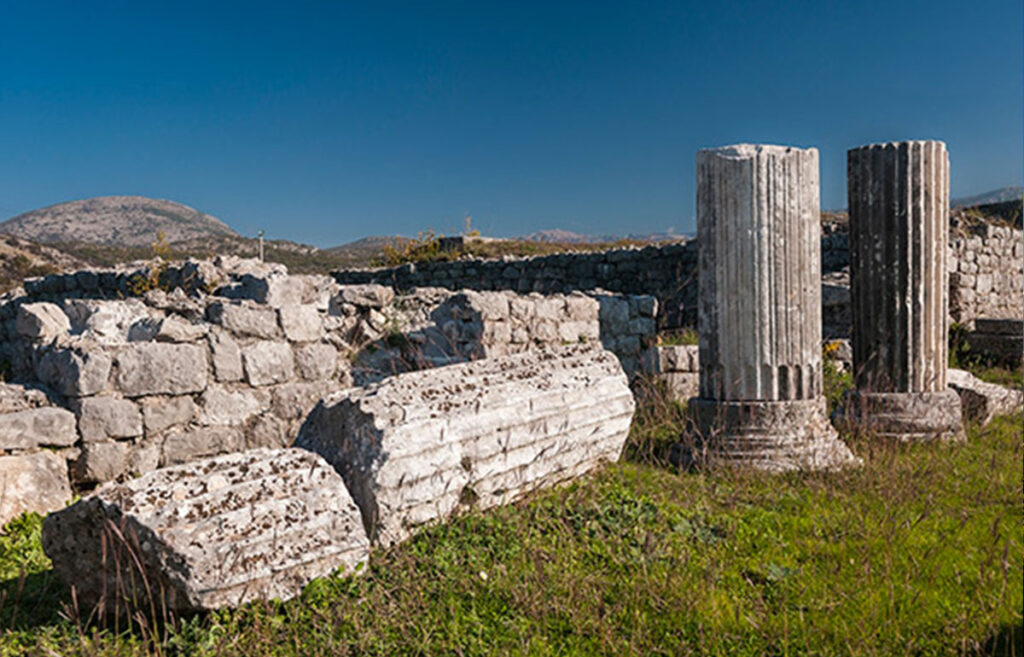
Just four kilometres from the City centre, on a wide plateau, surrounded by rivers Morača, Zeta and Širalija, travellers can visit the remains of the ancient town of Doclea, dating back from the I century AD. Already at IV century AD, the area in the eastern part of the town is being settled by Christians who are building churches and a large Episcopal Basilica. Some valuable artefacts, found in the tombs at the archaeological site – pottery and glass dishes, parts of jewellery, tools, weapons and money, are exibited at the City Museum. The ancient Doclea became known in the archaeological world when the famous Podgorica Cup was discovered, and which is today kept in the Russian Museum of Hermitage. The first archaeological excavations have started at the end of XIX century and are still ongoing.
Medun
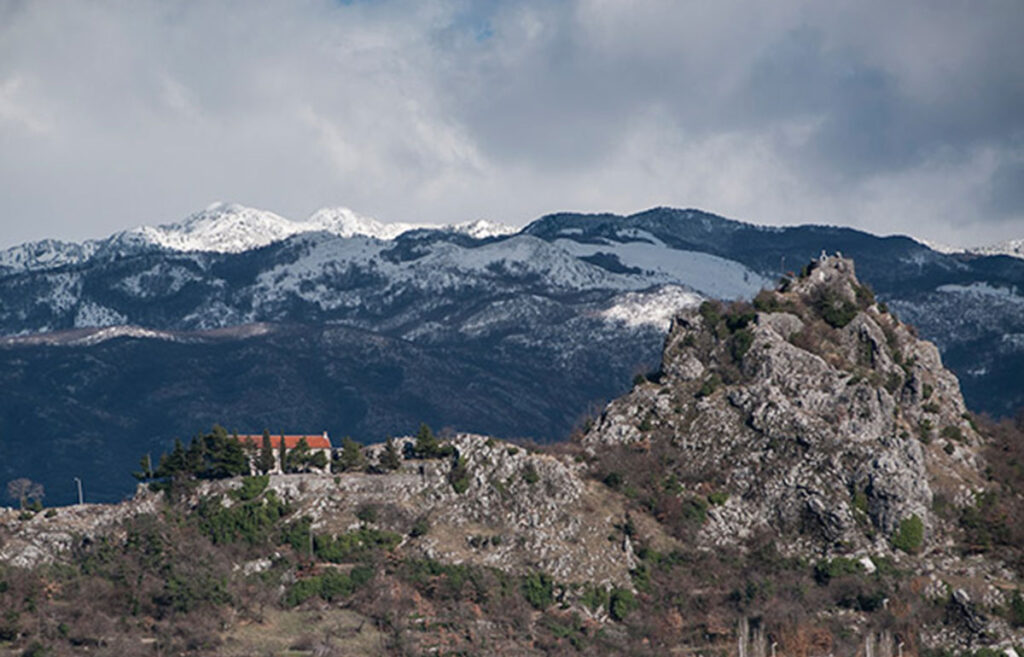
The Old town Medun is located about 12 kilometres north-east from Podgorica, in the Kuči area. It is known for its monumental complex that consists of the remains of the Illyrian town Meteon, St. Nikolas’ Church and the birthplace of Marko Miljanov, a Montenegrin national hero and writer, which house today is a City’s Memorial Museum. Meteon was one of the centres of the Illyrian tribe Labeati that ruled the Skadar Lake basin. It was founded in the late IV or early III century BC, on a hardly accessible ridge dominating the Medun field. Today, only parts of the massive defensive walls, built in the so-called Cyclops technique are visible. The remains of the town Medun, with preserved corner towers and ramparts in some places, mostly belong to a medieval Turkish fortress. Among the remains of the Meteon fortress there is the church of St. Nikolas, built in the early XVIII century, on the foundations of an older church. Next to the church there are the graves of Marko Miljanov and his wife Stefa, and below, on a saddle pass, there is a birthplace of Duke Marko Miljanov Popovic, and at the same time a warrior, a statesman, a writer and one of the most important figures in Montenegrin history of the 19th century.
Old Town and Clock Tower
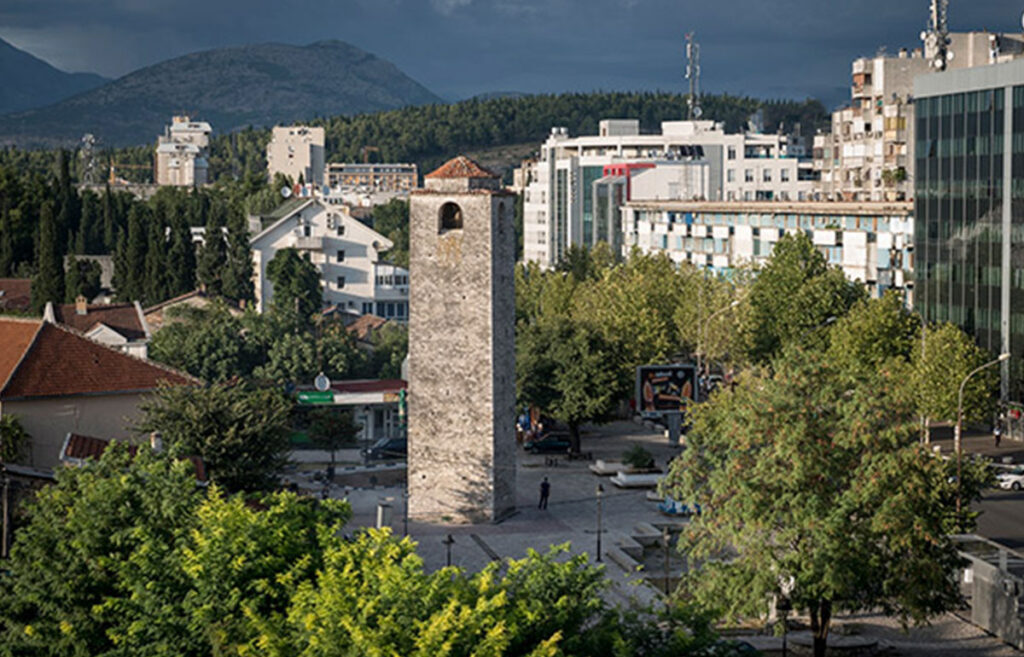
The Old Town, with its urban and architectural forms, customs, lifestyle and oriental characteristics, was a core of the old Podgorica in the period of Ottoman Empire (1474 – 1879). The symbol of the Old Town is a Clock Tower, the building located in the Square of Bećir Beg Osmanagić. It was built in the XVIII century by Mehmed-Pasha Osmanagić. An interesting fact is that at that time he ordered a watch from Italy. In the town there was the Turkish fortress Depedogen (popularly called Ribnica) built in 1474, after the Ottomans had conquered the medieval square of Podgorica. The waqf building, located next to the Clock Tower was demolished in the middle of the 20th century.
Sastavci and Brigde on Sastavci
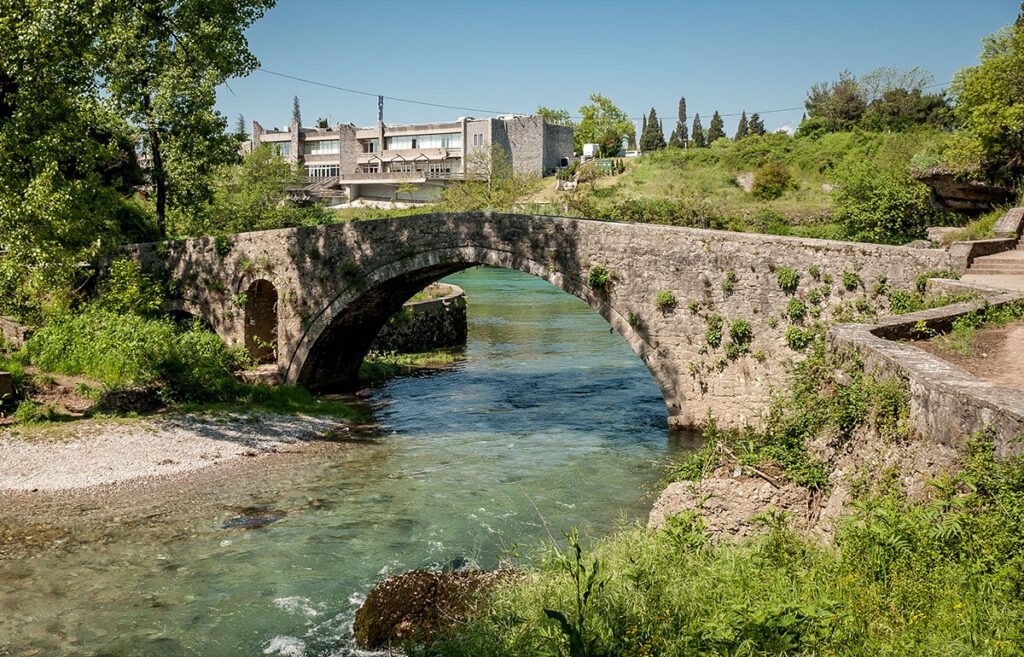
Podgorica citizens especially love this favourite romantic place, and the youngsters gave it a nickname Skaline. The old stone bridge at the mouth of the Ribnica in Morača, dating back to the Roman times, is the oldest in Podgorica. According to available data, this bridge is one of the few remains of the former Grimm city that was located in this area. Older inhabitants of Podgorica call this bridge “A bridge on Sastavci”, because the area around the mouth of the Ribnica in Morača was called Sastavci. The bridge is built of a single arch and it is only a few meters high. The story goes that it has been built from the river rocks and has always been a favourite meeting place for lovers, a gathering place for young and old, where they refresh themselves in hot summer months, in a pleasant natural area, just by the river.
The sunset from “Podgorica Bridge of Sighs” is something that cannot be forgotten.
Palace Complex Kruševac
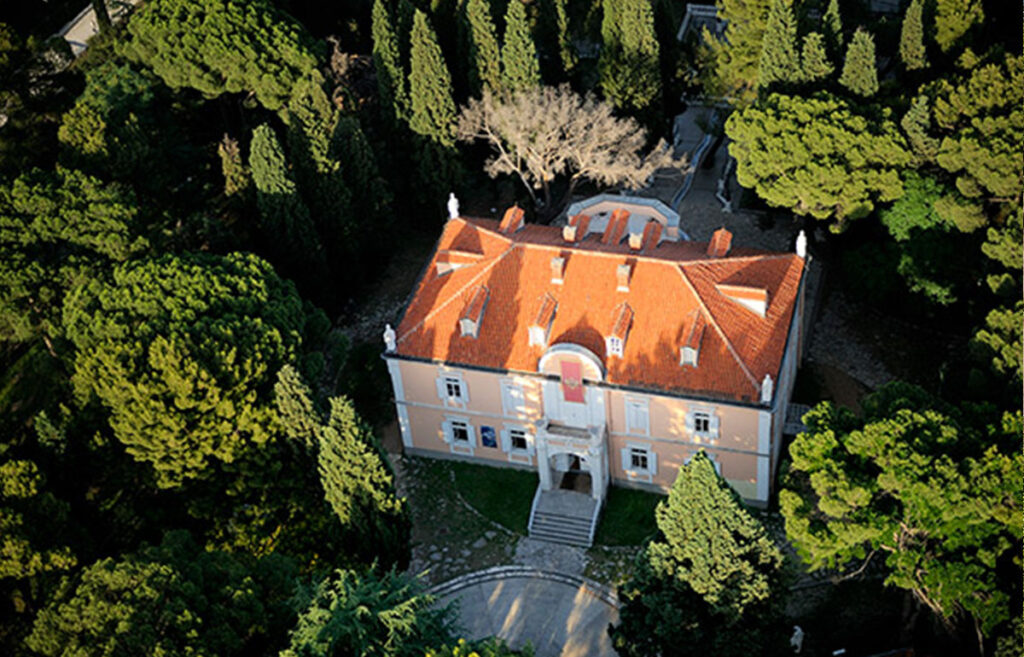
The former winter castle of King Nikola I Petrović is surrounded by a beautiful park forest and during the summer months it represents a unique art and exhibition scene and it is one of favourite places of fellow citizens. The complex in Podgorica, located on a hill, on the right bank of the Morača River was built in the 19th century. The main building of the complex is a Palace of King Nikola, which was built in the period from 1891 to 1894, and during the past it was the official Winter Residence of the last Montenegrin king. Perjanički dom and the Church of St. Dimitrije, which was also the family chapel of Nicholas I, were built next to the castle.
Today, the Palace Complex in Kruševac is the seat of the Center of Contemporary Art, an exhibition space, a botanical garden, as well as a music pavilion, which was built at the end of the last century.
Religious objects
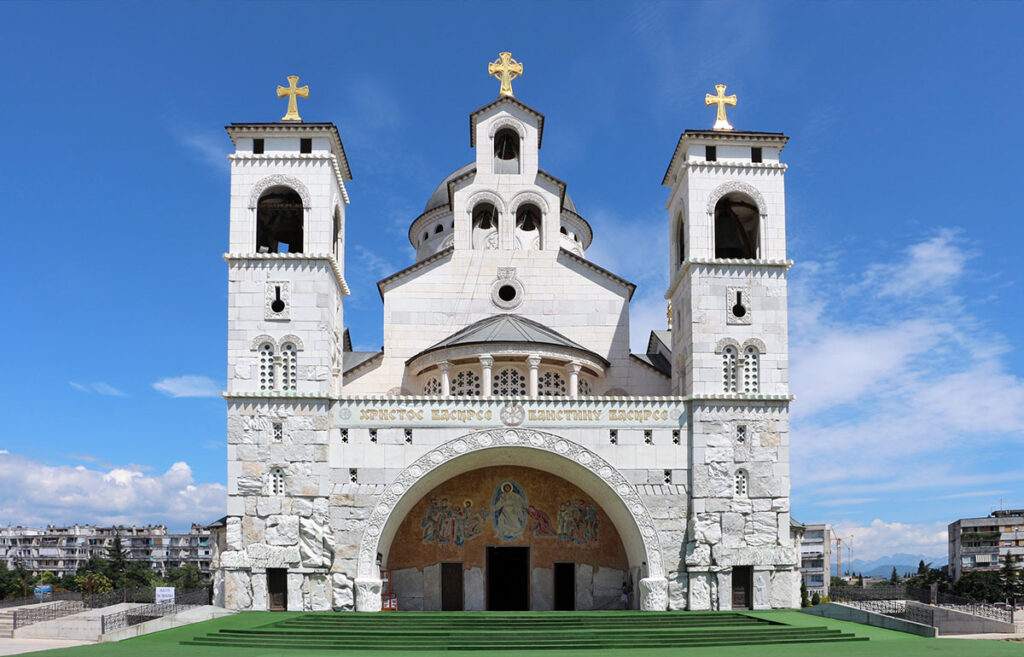
The monumental Cathedral of Christ’s Resurrection in Podgorica, due to its exceptional architecture and artistic value, represents a unique religious shrine. Its construction began in 1993, and it took 20 years to complete it.
The Church of St. George is located at the foothill of Gorica hill that the City was named after. The Church was built between IX and XI century. During the turbulent history it was repaired and reconstructed several times, so its original look has not been fully preserved. The interior of the church is decorated with frescoes of an anonymous artist. And there are also monastery complexes: Dajbabe (1897), Ćelija Piperska (1637) and Duga Moračka (1755).
The Osmanagić Mosque and the Clock Tower were built by Hadži Mehmed-pasha Osmanagić at the end of the 18th century. In the courtyard of the mosque there is a tomb of Mehmed – pasha Osmanagić. During the World War II bombing, it suffered great damage and it was in ruins up to until 1997, when it was thoroughly reconstructed.
The Roman Catholic Church of the Sacred Heart of Jesus was built in 1969 and in terms of architecture it was an innovation not only in the sacral but also in the overall Montenegrin architecture after the Second World War.
Vineyards Plantaže
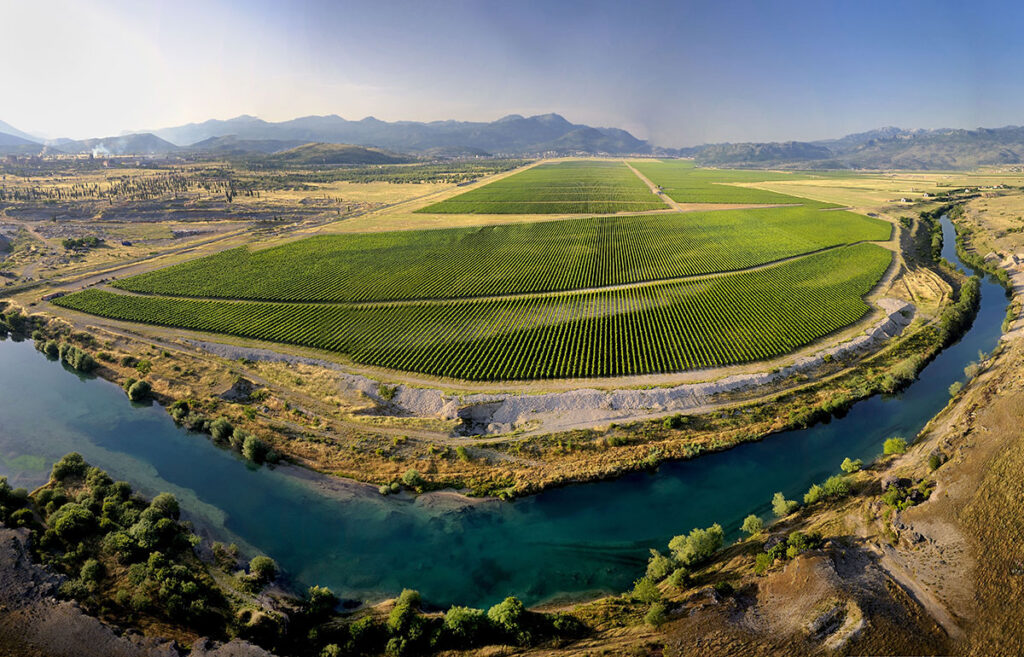
It is one of the largest and most beautiful vineyards in Europe, covering an area of 2,300 hectares, with about 11.5 million of grape vines.
The vineyards are bordered on one side by the bed of the Cijevna River, a sinkhole which searching its way to the Morača River and the sea, broke through the pristine rocks and formed a picturesque small canyon. Although the vineyard is huge and parcels are very much apart from each other, the visitors can go on sightseeing of the entire Vineyard, enjoying a glass of sparkling wine while riding on a small tourist train, gliding through this wine-growing empire. At the Vineyard, 29 different grape varieties are grown, among which the most important ones are indigenous Montenegrin varieties, Vranac and Krstac. Vranac is the undisputed ruler of Ćemovsko field, covering two thirds of the vineyards.
After visiting the vineyards, one can visit the Šipčanik cellar, experience the impressive ambience of the unique wine cellar in Europe and enjoy in memorable aromas and flavors – in the “bouquet” of Montenegro.
City Museums and Galleries
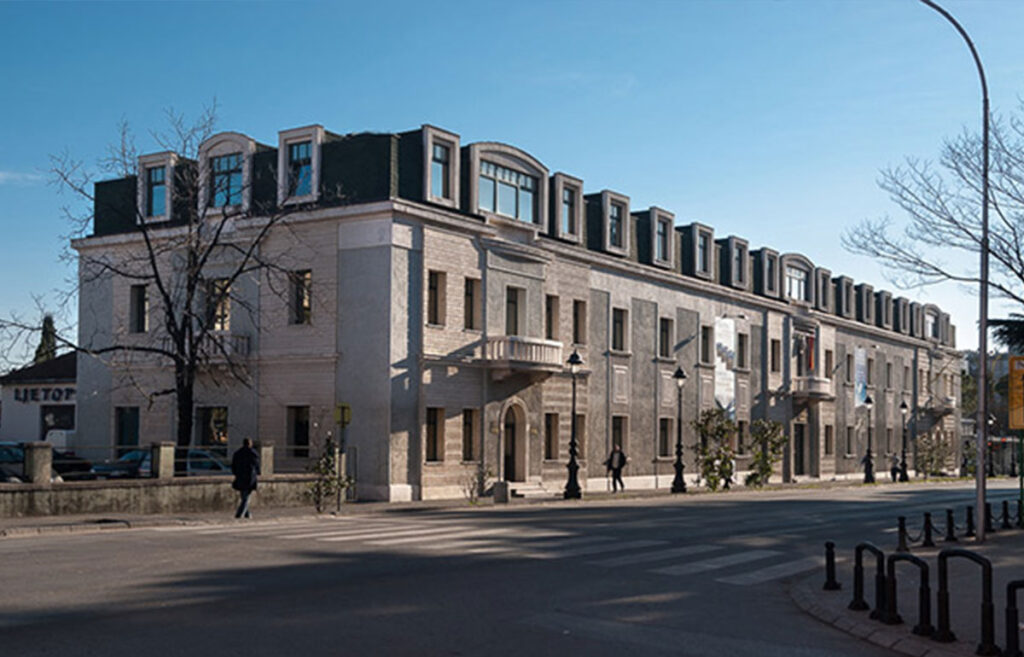
The Museum of Podgorica was founded on April 8, 1950. With the integration with the Modern Gallery and the Risto Stijović Gallery in 1974, this institution exists as Museums and Galleries of Podgorica. The permanent exhibition harbours rich archaeological, cultural – historical, ethnographic and historical collections.
The Museum is constantly engaged in systematic research, collection, preservation, maintenance, collating, studying, processing, exhibiting, promoting and publishing the Museum and Gallery materials, as well as improving its core activities. In addition, the Museum is in charge of maintaining, preserving and protecting historical and cultural monuments on the territory of the city of Podgorica.
Millennium Bridge
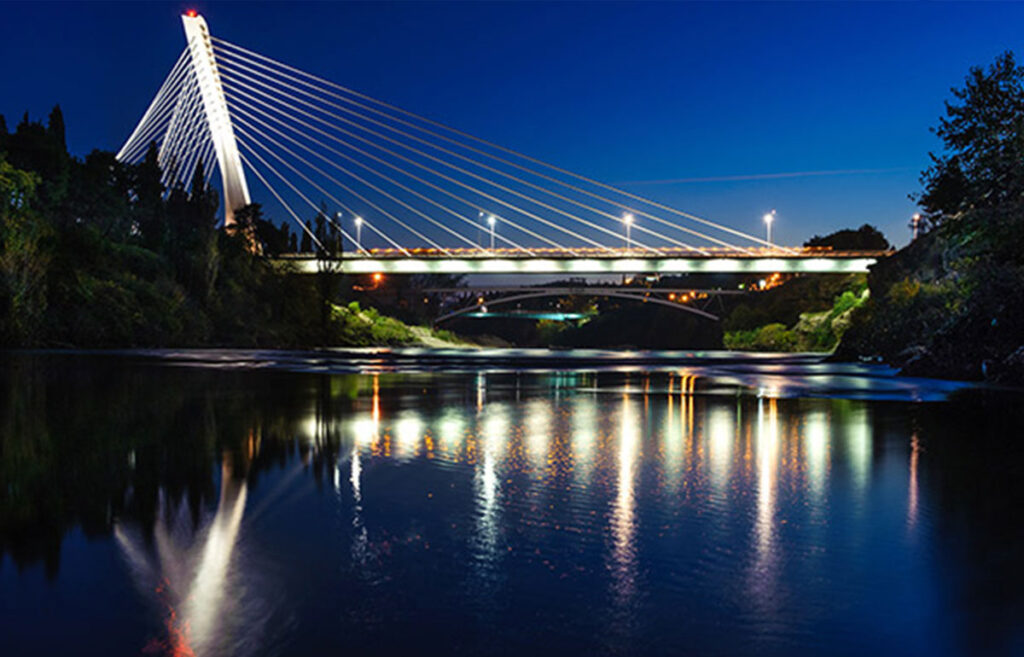
Millennium Bridge was built over the Morača River, the largest river in Montenegro and connects old and new parts of the city. This is a suspension bridge with 57 meters high pylon above the road, with 12 cables, while another 24 are attached to counterweights. It is about 140 meters long across the river (173 meters from one end of the bridge to another) and 24 meters wide. It was built in less than a year, and its opening coincided with the country’s entry into a new, the 21st century – the era of technology and progress, which is reflected in bridge design. Millennium Bridge was built according to a project of Balkan architect, Mladen Ulićević, a professor of civil engineering.
